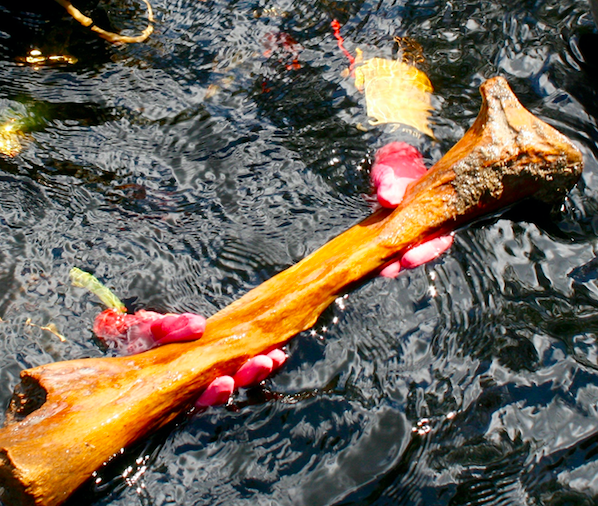New Scientist
Image: Brendan Fenerty
The first Americans don’t give up their secrets easily. Archaeologists working in Florida had to don scuba gear to recover the latest evidence of these elusive ancient people.
The finds, removed from the bottom of a water-filled sinkhole 9 metres deep, include 14,500-year-old stone tools alongside the remains of a butchered or scavenged mastodon, a type of prehistoric elephant.
The discoveries show that the first people to settle in the Americas, who arrived on the Pacific coast at least 15,500 years ago, must have quickly spread east and south to occupy vast swathes of North America. It also shows that those earliest Americans lived alongside large mammals for at least two millennia before the megafauna went extinct.
For years, archaeologists thought they understood the early settlement of the Americas. The Clovis people arrived there from Siberia about 13,000 years ago, so the story went, and spread across North America, leaving distinctive tools – and the carcasses of large mammals – in their wake. Soon after the Clovis turned up, many of those large mammal species died out.
Today, we know the story is more complicated. The discovery of “pre-Clovis” sites shows that humans actually reached the Americas at least 2500 years earlier than the Clovis. But only a few of these sites are known. Read more on newscientist.com…








